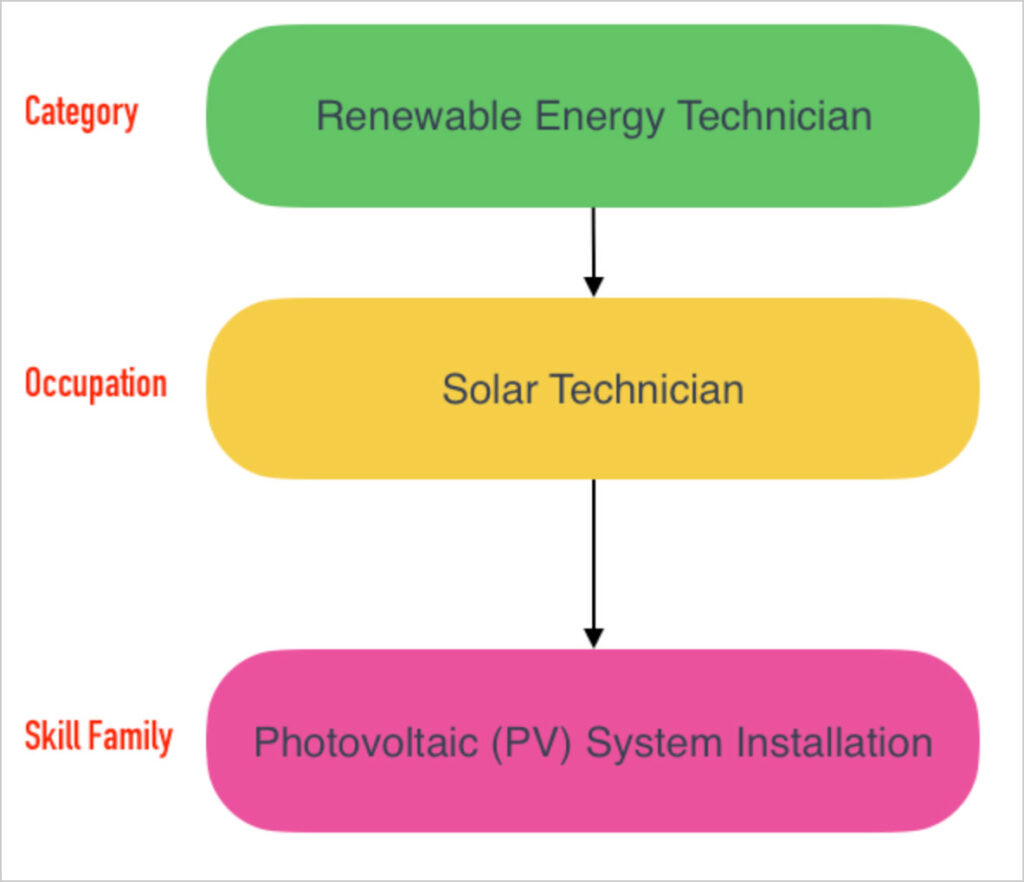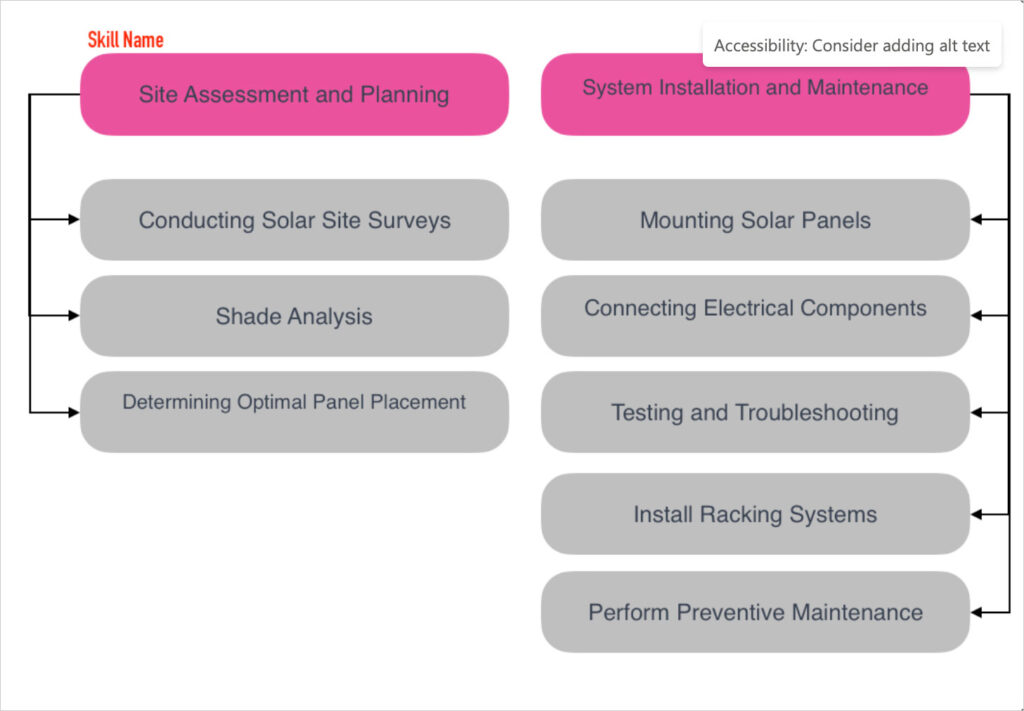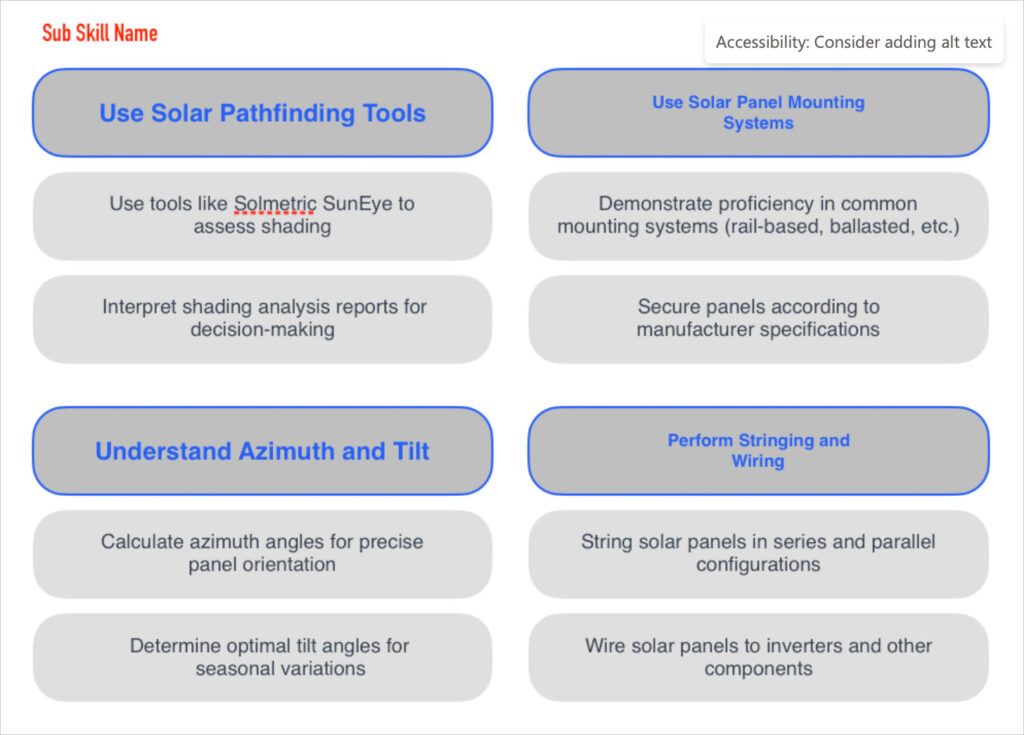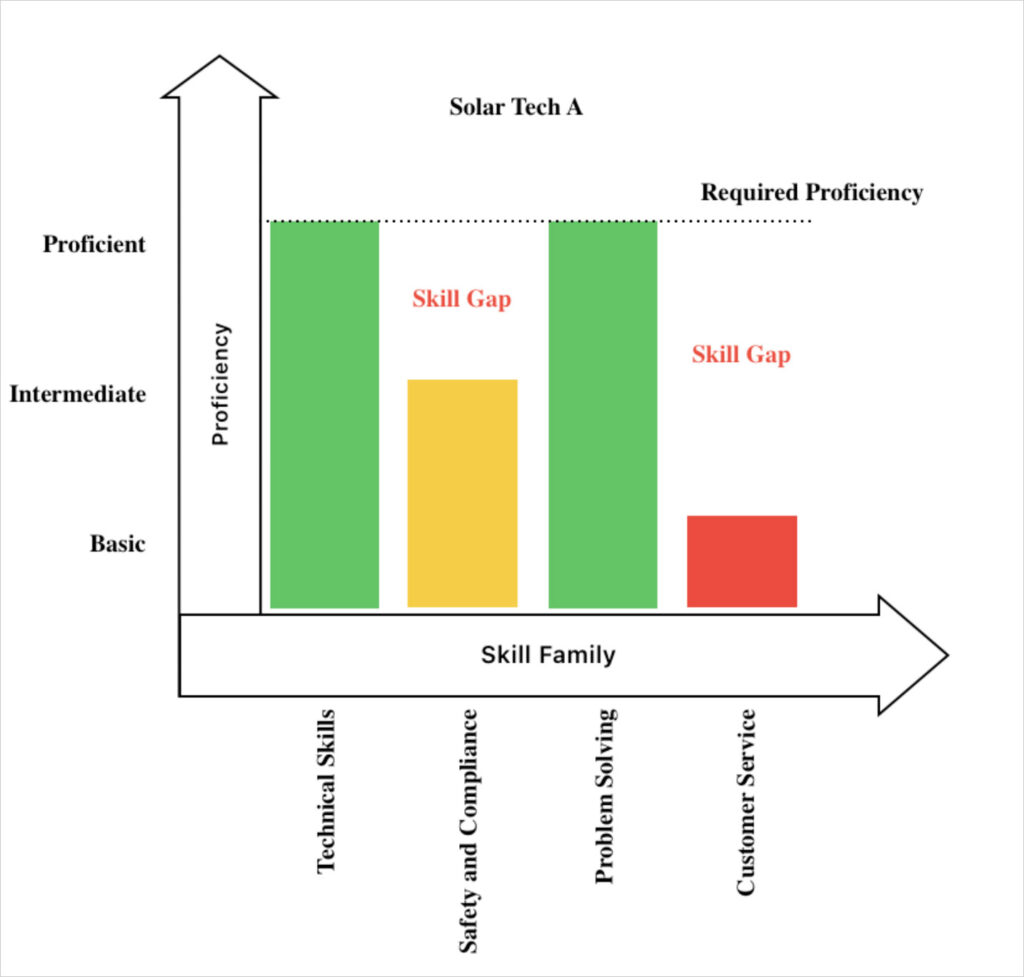The Fourth Industrial Revolution has reshaped our work landscape, ushering in disruptive technologies such as artificial intelligence, automation, and the Internet of Things. As organizations grapple with these changes, companies and individuals need to find ways to quickly and effectively re-skill and up-skill. To navigate this complexity, organizations are increasingly turning to a concept known as Skills Taxonomy. In this piece, we explore what Skills Taxonomy is, its key elements, and why it holds significance in the current context.
What is Skills Taxonomy?
A skills taxonomy is a structured framework that organizes and categorizes skills, providing a systematic way to understand the skills an organization possesses or requires at different levels of the organizational hierarchy.
Elements of a skills taxonomy framework
The components within the skills taxonomy framework serve as a guide, offering a roadmap for individuals and companies to navigate the intricate landscape of understanding skills essential for effective job performance and team composition. The key elements of a skills taxonomy are:
Category
Occupations serve as the broadest level of classification, encompassing a grouping of related roles based on shared characteristics, functions, or industries. For example, the category of “Renewable Energy Professionals” or “Green Occupations” may include roles like “Solar Technician” (focusing on solar energy systems) and “Wind Technician” (specializing in wind energy technologies). This category highlights related occupations within the broader field of renewable energy.
Occupation
In the context of Skills Taxonomy, occupation serves as an intermediate classification level, and refers to a distinct job role or profession. It embodies a cluster of related tasks, responsibilities, and expertise required for a specific area of work. For example, a “Solar Technician” is an occupation encompassing various roles, including installation, maintenance and repair of solar energy equipment.
Skill Family
A Skill Family is a grouping of skills united by a common theme or competency, particularly in terms of the tasks they enable a person to perform. It organizes skills into cohesive clusters, facilitating a more comprehensive understanding of the capabilities required within a specific domain, industry, or occupation. For a Solar Technician, the skill family might encompass expertise in the installation of photovoltaic (PV) systems, solar inverter technologies, performance monitoring, safety and compliance in handling solar systems and customer education & support.

Skill Name
A Skill Name represents a distinct competency or expertise within a skill family, offering a precise label for a specific skill set necessary for a particular occupation or role. For instance, a Solar Technician should proficiently handle tasks like PV site assessment, planning, installation and maintenance, along with inverter installation, configuration, maintenance and troubleshooting, among other responsibilities. These Skill Names can be further sub-categorized based on competencies such as solar site surveys, shade analysis, and determining optimal panel placement, providing a granular understanding of the required expertise.

Sub-skill Name
The Sub-skill Name delves deeper into the intricacies of a specific skill, breaking it down into finer components encompassing distinct tasks and proficiency in equipment handling. Examples of finer components of site assessment and planning may involve the adept use of solar pathfinding tools or the comprehension of azimuth and tilt. These sub-skills provide a nuanced exploration of the knowledge areas and tasks that collectively contribute to the mastery of the overarching skill.

Skills Map
Another tool often used in conjunction with a skills taxonomy is the skills map, significantly enhancing an organization’s decision-making capabilities. It serves as a visual representation of an employee’s proficiency levels for each skill in the Skills Taxonomy relevant to their role in the organization. By facilitating comparisons between the skills requisite for a specific role and those possessed by individuals, the Skills Map becomes instrumental in identifying skill gaps at the individual, team, and organizational levels. These identified gaps serve as focal points for the development of targeted training programs.

The strategic integration of skills maps into an organization’s framework offers a competitive advantage by aligning talent development initiatives with the dynamic needs of both the workforce and the organization, leveraging data-driven insights.
Why Focus on Skills in the Modern Workforce?
In an era marked by rapid technological advancements and constant industry evolution, prioritizing skills enables organizations to adeptly respond to evolving market demands, ensuring sustained competitiveness. The traditional approach of seeking expertise externally proves inadequate in a business landscape where the demand for new skills surpasses the available pool of trained talent.
Hence, organizations must pivot towards adopting a “farming” mentality – actively cultivating and nurturing the skills within their existing workforce. Robust reskilling programs emerge as the linchpin in this strategic approach, not only fostering employee loyalty but also ensuring a workforce finely tuned and prepared for the challenges that tomorrow may bring.

